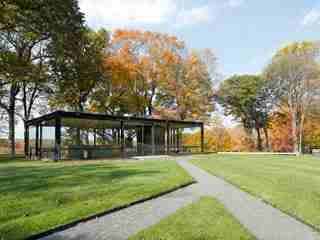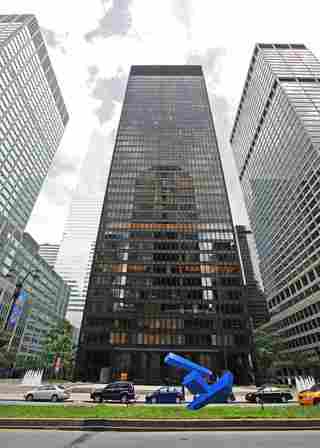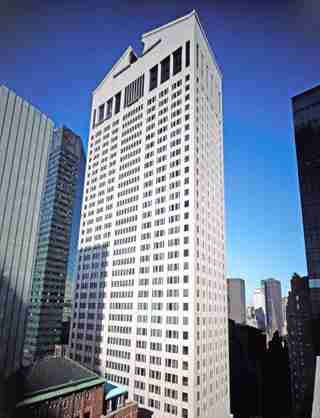Even before he began designing buildings, Philip Johnson (1906–2005) was influencing architecture. At age 26, the Cleveland native and Harvard graduate became the first director of the department of architecture at the Museum of Modern Art. During his tenure at MoMA, Johnson promoted the work of modern architects including Mies van der Rohe and Walter Gropius, and along with Henry-Russell Hitchcock, he curated the controversial 1932 show “Modern Architecture: International Exhibition,” which introduced America to European modernism. Johnson returned to Harvard in 1940 to study architecture with Marcel Breuer, and in the late 1940s and ’50s he designed several of his most iconic structures, including his New Caanan, Connecticut, residence, the Glass House , and the Seagram Building in New York, which was a collaboration with Mies van der Rohe. In 1979, Johnson was the first recipient of the Pritzker Prize. From his early modern structures to his later postmodern buildings, Johnson defined several architectural movements over the course of his decades-long career.

The Glass House, Philip Johnson’s New Canaan, Connecticut, home, was one of his first projects, and one that would continue throughout his career. The 49-acre property includes 14 structures built between 1949 and 1955. The Glass House itself was designed to be open to the surrounding landscape and overlooks a pond. Now a National Trust for Historic Preservation Site, it welcomes visitors for tours from May through November.

Johnson collaborated with architect Mies van der Rohe on the Seagram Building in Manhattan. The Park Avenue tower is sheathed in bronze and glass and spans 38 stories. Johnson also designed many of the interior spaces, including the iconic Four Seasons restaurant.

Located at 550 Madison Avenue in Manhattan, Johnson’s AT&T Building (now known as the Sony Tower) is an icon of postmodern design. The building was designed with his partner at the time, John Burgee, and is distinguished by a pink granite exterior and the Chippendale-inspired pediment.
Johnson was hired by televangelist Robert H. Schuller to design Crystal Cathedral, a sanctuary for his complex in Garden Grove, California. Dedicated in 1980, the building is clad in over 10,000 panes of glass and is shaped like a four-pointed star. The striking structure stands beside architect Richard Neutra’s Tower of Hope.
Houston’s nondenominational Rothko Chapel, which contains 14 paintings by Mark Rothko, was commissioned by John and Dominique de Menil in 1964 and completed in 1971. Johnson was the original architect on the project but was replaced by local architects Howard Barnstone and Eugene Aubry after disagreements with Rothko over the design.
Located in midtown Manhattan, the Lipstick Building, which gets its name from its shape and the shade of its red granite-and-steel exterior, was completed by Johnson and Burgee in 1986. The 34-story elliptical tower offers a striking contrast to the sharp-edged towers in the neighborhood.
Johnson designed Dallas’s Thanks-Giving Square, including the plaza’s spiral nondenominational chapel, in 1976. The chapel’s striking interior includes 73 panels of stained glass by artist Gabriel Loire.
Johnson’s design for the Amon Carter Museum in Fort Worth, Texas, was completed in 1961. The modern building was constructed using Texas shellstone, glass, and bronze and featured a two-story entrance hall and five gallery spaces. Johnson also oversaw two expansions, with the most recent addition opening in 2001.
Another of Johnson’s Texas projects was the Chapel of St. Basil on the campus of the University of St. Thomas in Houston. Completed in 1997, the building was designed using three shapes: a cube, a sphere (which creates the dome), and a plane.
Johnson’s New York State Theater, now known as the David H. Koch Theater, at Manhattan’s Lincoln Center opened in 1964 and has served as the home of the New York City Ballet for over 50 years. The theater was initially built as part of the 1964–65 World’s Fair.
Johnson and Burgee designed Pittsburgh’s PPG Place, which includes a 40-story tower, a 14-story building, and four six-story structures. Completed in 1984, the glass-and-steel complex has 231 spires, adding to its distinctive neo-Gothic style.
